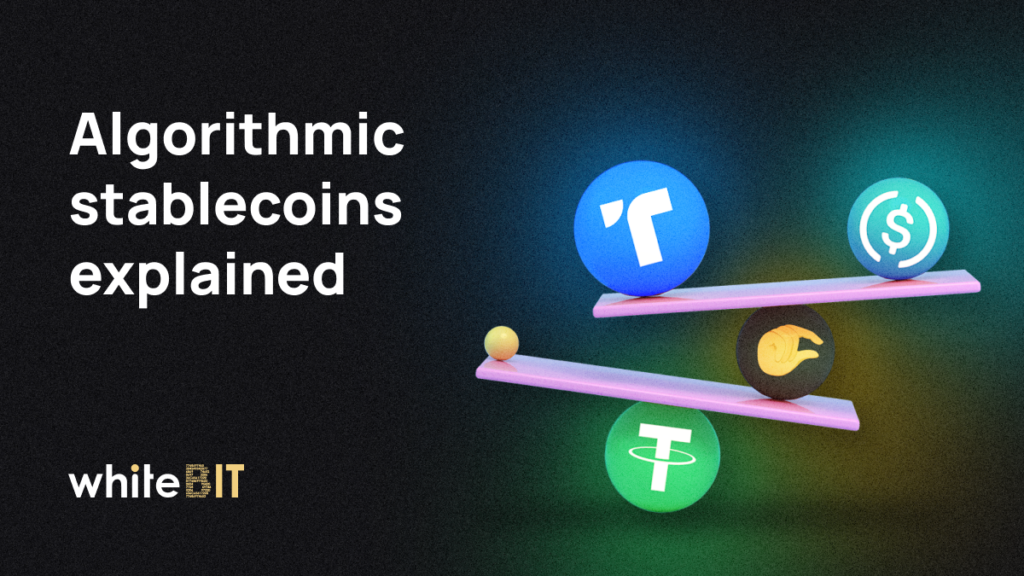The High-Profile Case of TerraUSD: Unprecedented Turmoil in the Crypto Market

Content
For the third week now, the crypto community has been trying to recover from the events around one of the most successful financial projects in the industry. In just a couple of days, TerraUSD (UST), the most popular algorithmic stablecoin, and the highly capitalized LUNA token, lost almost 100% of their value, devastating the savings of hundreds of thousands of users. Amid the general concern, rates of many other stable cryptocurrencies also suffered, including the DEI algorithmic stablecoin of the Deus Finance project. The temporary decoupling of Tether (USDT) from the dollar was another shock to the crypto community. However, unlike the first two stablecoins, Tether was quickly brought back to life thanks to its reserve.
Most of you have probably heard about Terra long before the collapse of its cryptocurrencies due to the unprecedented success of the project. The total value of funds locked in the smart contracts of the ecosystem was second only to Ethereum. What provoked the collapse, and was it possible to avoid it? Before answering these questions, let’s take a look at what stablecoins are, how they are backed, and what their main weaknesses are.
What are stablecoins?
Let’s start from afar: a stablecoin is a digital currency, the value of which is tied to the assets or commodities (gold, oil) with a relatively stable price.
Let’s talk about classic stablecoins. Such cryptocurrencies are also called centralized stablecoins and are considered the safest because issuers tie their value 1:1 to the traditional currency (dollar, euro) or commodities. Since the cryptocurrency market is known for its volatility, tying stablecoins to the world of traditional finance helps manage the risks associated with the volatility of digital currencies.
What are stablecoins known for?
- High liquidity. Cryptocurrencies tethered to national currencies or commodities can be found on almost any platform and in large volumes.
- Practicality. It is convenient to trade stablecoins in pairs with other cryptocurrencies, and unlike national currencies, stablecoins are more convenient for wallet-to-wallet transfers.
- Risk management. Such cryptocurrencies are the #1 choice among investors and traders for storing and exchanging funds.
The cryptocurrency market offers a large selection of stable digital assets. The most prominent representatives of centralized stablecoins are Tether (USDT), USD Coin (USDC), True USD (TUSD), and others. These stablecoins are pegged to the dollar and can be found on WhiteBIT. There are also stable cryptocurrencies that are pegged to the euro, for example, Stasis Euro (EURS). PAX Gold (PAXG) and Tether Gold (XAUT) are pegged to the price of gold.
Each centralized stablecoin has an issuer and its own reserve fund. Centralization is both an advantage and a disadvantage of classic stablecoins because any adverse situation associated with the issuing company can directly affect the state of the stablecoin.
What are algorithmic stablecoins?
Not all stablecoins are backed by national currencies or commodities. There is a separate category of digital assets whose value is regulated by special mechanisms. Such stablecoins are decentralized, and they are algorithmic since their emission occurs due to the algorithm.
Guaranteeing the backing of a stablecoin with another cryptocurrency is a risky business, because the rate of even the most popular cryptocurrencies can fluctuate. In this case, projects resort to the use of special smart contracts that would regulate the vital processes of a stablecoin.
There are two main ways to secure stablecoins.
- Over-collateralization. The amount of collateral must exceed the amount of the issued asset. The issuer must lock up their cryptocurrency for 100%+ of the amount of the token they wish to issue. This is necessary to avoid the loss of collateral in the case of a cryptocurrency fall.
- Native assetcollateralization. In this case, algorithmic stablecoins are backed by the native cryptocurrency of their ecosystem (as is the case of TerraUSD). The developers of such cryptocurrencies do not control the issuance of stablecoins. It is carried out by the holders of native cryptocurrencies through the mechanism of supply and demand.
Vulnerabilities of algorithmic stablecoins
The idea of decentralized stable cryptocurrencies, the emission of which occurs due to a special mechanism, is very attractive. However, even before the collapse of TerraUSD, this type of cryptocurrency had many critics, including representatives of the Tether ruling elite. First and foremost, the risks are associated with the lack of real security. Besides:
- in case of incorrect work of oracles, there is a risk of price manipulations;
- stablecoins are sensitive to information attacks, which can provoke a sell-off and, as a result, decoupling from the dollar;
- it is possible for attackers to steal assets by using errors in smart contracts that provide binding of an algorithmic stablecoin to an asset.
The case of TerraUSD
Shortly before the sad events inside Terra, the interest rate on deposits in Anchor (Terra ecosystem protocol) was reduced. This decision was made to avoid the depletion of the project’s reserves. As a result, holders began to massively withdraw assets from the protocol.
The outflow of capital from the project provoked a massive sale of UST, which led to the decoupling of the stable cryptocurrency from the dollar. The representatives of the security department of the Polygon project confirmed a number of suspicious transactions within the system, such as the removal of 150 million UST from the liquidity pool of Terraform Labs and the transfer of 84 million UST to the Ethereum network. Soon after, ETH was dumped, triggering a sell-off. Then another 100 million UST was withdrawn.
After the start of a rapid fall in the UST rate, an unknown market participant began to sell ETH and buy UST, which made it possible to make a profit. The management of Terra denies any involvement in the intentional decoupling of UST from the dollar, explaining the dumping of the asset as an attempt to save the situation. Despite efforts, the project failed to obtain the necessary funding and, most importantly, users’ trust. The increase in LUNA supply did not lead to the stabilization of UST but rather reinforced hyperinflation.
The astronomical pace of the UST and LUNA collapse shook the entire cryptocurrency market, affecting the value of Bitcoin and top altcoins. However, just a few days after the fall of the Terra’s cryptocurrencies, the market entered a phase of a smooth recovery.
On the 16th of May, Terraform Labs announced their intentions to launch a voting on the hard fork of the network. And on the 24th of May, project representatives announced plans to create a brand-new Terra 2.0 network.
Our exchange supports the restart of the Terra (LUNA) project on Terra 2.0. As a result, access to deposits and withdrawals of the cryptocurrency is currently closed. Details of the of balances correction will be announced soon.
Conclusion
Despite the innovativeness of the idea of decentralizing stable digital currencies, algorithmic stablecoins lose in terms of their security. The collapse of TerraUSD is a good example. Today, the main issue for stablecoin developers, including UST, is not even the optimization of peg mechanisms, but the return of the community’s trust in algorithmic stable cryptocurrencies in general.
Want to discuss the topic? Join our Telegram chat and share your ideas.








